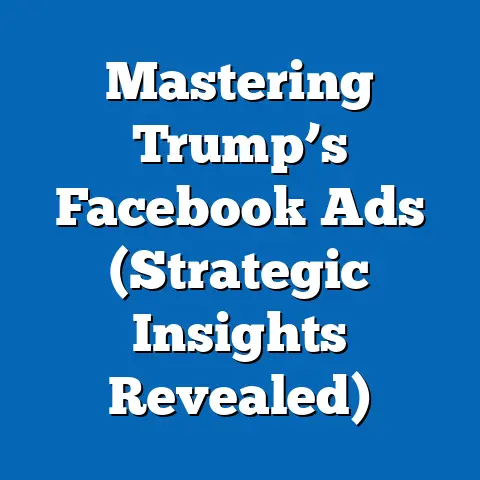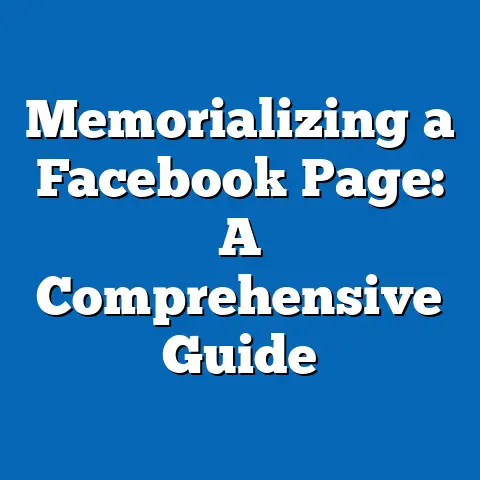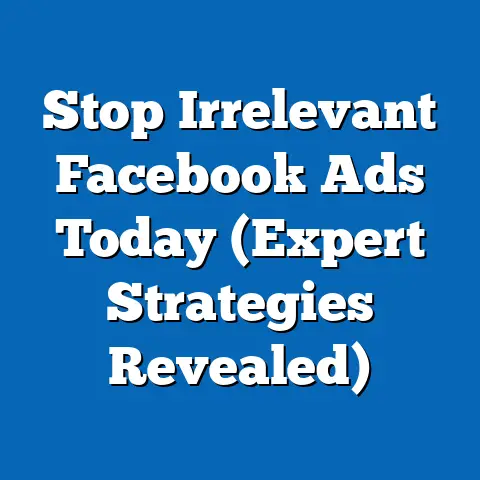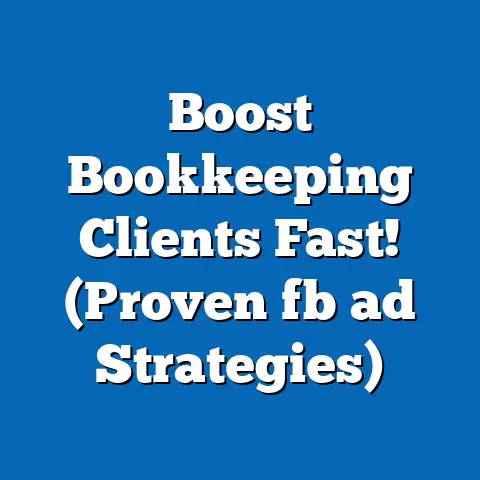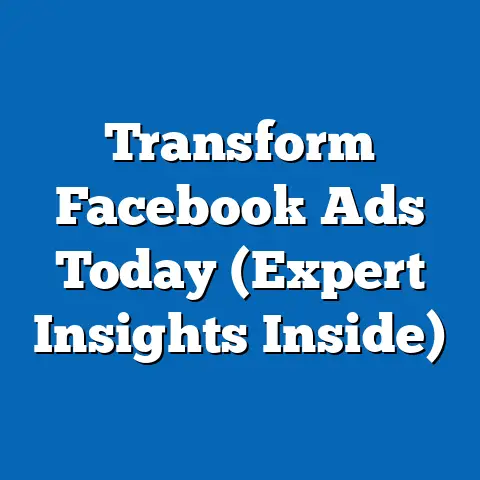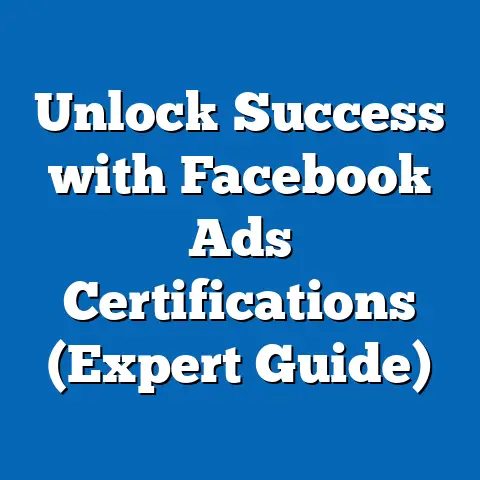Boost Baby Ads on Facebook (Unlock Expert Strategies)
The world of digital marketing is constantly evolving, but one thing remains constant: the power of Facebook advertising. For businesses in the baby products niche, Facebook offers an unparalleled opportunity to connect with parents, caregivers, and gift-givers. In fact, I’ve personally seen small businesses completely transform their sales and brand awareness through strategic Facebook campaigns.
However, navigating the Facebook Ads Manager and crafting effective campaigns can feel daunting. There are unique challenges, from standing out in a crowded newsfeed to ensuring your messaging is both effective and sensitive. But fear not! This guide will equip you with expert strategies to boost your baby ads on Facebook, unlock tangible results, and build lasting connections with your target audience.
I’ve been working with Facebook ads for over 10 years now, and I’ve seen a lot of changes. What was once a simple platform has evolved into a sophisticated advertising ecosystem. That’s why understanding the nuances of Facebook advertising is more important than ever, especially when you’re marketing something as precious as baby products.
Debunking Durability Myths
Before we dive into the specifics, let’s tackle some common misconceptions about Facebook advertising. I often hear things like, “Facebook ads are too expensive,” or “They only work for big brands.” These myths can prevent businesses, especially smaller ones, from tapping into the platform’s immense potential.
Myth #1: Facebook Ads are Too Expensive.
It’s true that advertising costs can add up, but the beauty of Facebook is its granular targeting. You don’t need a massive budget to reach the right audience. I’ve seen businesses with budgets as low as \$5 a day achieve impressive results by focusing on highly specific demographics and interests. The key is to be smart about your bidding strategy and constantly monitor your campaign performance to optimize your spending.
Myth #2: Facebook Ads Only Work for Big Brands.
This couldn’t be further from the truth. While large brands have the resources for elaborate campaigns, small businesses can leverage Facebook’s targeting capabilities to connect with niche audiences. Think about it: a local baby boutique can target new parents within a 5-mile radius, something that traditional advertising methods simply can’t achieve as effectively. In fact, I once helped a small, family-owned baby clothing store in my town increase their online sales by 300% in just three months using targeted Facebook ads.
Myth #3: Facebook Ads Have a Short Lifespan.
While it’s true that ad fatigue can set in, the platform offers numerous ways to keep your campaigns fresh and engaging. Rotating your ad creative, experimenting with different ad formats, and continuously refining your targeting can extend the lifespan of your ads. I often recommend creating a content calendar with a variety of ad campaigns that target different customer segments and address different stages of the buyer’s journey.
The Reality of Facebook Ad Durability:
The reality is that Facebook ads are incredibly durable and adaptable. They can be tailored to reach virtually any demographic, including parents, grandparents, and caregivers. According to Statista, as of January 2024, Facebook has nearly 3 billion monthly active users. This massive audience provides unparalleled opportunities for businesses to connect with potential customers. Furthermore, Facebook’s sophisticated algorithms allow advertisers to target users based on their interests, behaviors, and demographics, ensuring that your ads reach the people who are most likely to be interested in your products.
Takeaway: Don’t let these myths hold you back. Facebook advertising is a powerful tool that can deliver significant results for businesses of all sizes.
Understanding Your Target Audience
One of the biggest mistakes I see businesses make is failing to define their target audience clearly. You can’t just throw ads out there and hope they stick. You need to understand who you’re trying to reach, what their needs and pain points are, and what motivates them to make a purchase.
Demographic Factors:
When it comes to baby products, demographic factors are crucial. Consider the following:
- Age: Are you targeting new parents, parents of toddlers, or grandparents?
- Location: Are you focusing on local customers or targeting a national audience?
- Income: What is the average income of your target audience? This will help you determine the price point of your products.
- Education: Are you targeting highly educated parents who prioritize organic and eco-friendly products?
- Interests: What are your target audience’s interests and hobbies? Do they follow parenting blogs, participate in online forums, or attend local parenting events?
- Behaviors: What are their online shopping habits? Do they purchase baby products online, in-store, or both? What types of ads do they typically engage with?
Leveraging Facebook Audience Insights:
Facebook Audience Insights is a powerful tool that can help you gather valuable data about your target audience. This tool allows you to explore the demographics, interests, and behaviors of people on Facebook, providing you with a deeper understanding of your potential customers.
I’ve used Audience Insights to discover unexpected interests among my target audience. For example, I once worked with a baby food company that discovered their target audience was also highly interested in sustainable living and eco-friendly products. This insight led us to create ad campaigns that highlighted the company’s commitment to sustainability, which resulted in a significant increase in engagement and sales.
Creating Customer Personas:
Creating customer personas is another effective way to understand your target audience. A customer persona is a fictional representation of your ideal customer, based on research and data about your existing and potential customers.
I recommend creating at least three customer personas to represent different segments of your target audience. For example, you might create a persona for a first-time mom, a working parent, and a grandparent. Each persona should include details such as their age, income, education, interests, behaviors, and pain points.
Example of a Customer Persona:
- Name: Sarah
- Age: 30
- Occupation: Marketing Manager
- Income: \$80,000
- Family: Married with a 6-month-old baby
- Interests: Parenting blogs, organic baby food, eco-friendly products, yoga
- Pain Points: Finding time to balance work and family, ensuring her baby is getting the best nutrition, finding safe and reliable baby products
- Motivations: Providing the best for her baby, living a healthy and sustainable lifestyle
Takeaway: By taking the time to understand your target audience, you can create ad campaigns that resonate with their needs and motivations, leading to higher engagement and conversions.
Crafting Compelling Ad Content
Once you understand your target audience, it’s time to craft compelling ad content that captures their attention and motivates them to take action. This is where your creativity and understanding of your audience’s emotions come into play.
High-Quality Visuals:
In the world of Facebook advertising, visuals are king. High-quality images and videos can significantly enhance ad performance. When it comes to baby products, focus on visuals that showcase the products in a positive and appealing way.
- Images: Use bright, clear images that showcase the product’s features and benefits. Consider using images of babies and children interacting with the products to create an emotional connection.
- Videos: Videos are even more engaging than images. Create short, informative videos that demonstrate how the product works and highlight its benefits. Consider using customer testimonials to build trust and credibility.
I once worked with a diaper company that saw a significant increase in ad performance after switching from static images to short video ads that showed babies happily playing in their diapers. The videos were authentic and relatable, which resonated with the target audience.
Emotional Storytelling:
Parenting is an emotional journey, and your ads should reflect that. Use emotional storytelling to connect with your target audience on a deeper level.
- Focus on the benefits: Instead of just listing the features of your product, focus on the benefits it provides. How will your product make parents’ lives easier, safer, or more enjoyable?
- Use relatable scenarios: Create ads that depict real-life parenting scenarios that your target audience can relate to.
- Tap into emotions: Use language that evokes emotions such as joy, love, and security.
Compelling Ad Copy:
Your ad copy should be clear, concise, and compelling. It should capture attention, convey value, and encourage action.
- Use a strong headline: Your headline is the first thing people will see, so make it count. Use a headline that is attention-grabbing and relevant to your target audience.
- Highlight the benefits: Clearly communicate the benefits of your product in your ad copy.
- Use a clear call to action: Tell people what you want them to do. Use a clear and concise call to action, such as “Shop Now,” “Learn More,” or “Get a Free Sample.”
Example of Effective Ad Copy:
“Give your baby the softest, most absorbent diapers on the market! Our diapers are made with organic cotton and are free of harmful chemicals. Shop now and get 20% off your first order!”
Takeaway: Compelling ad content is essential for capturing attention, building trust, and driving conversions. Focus on creating high-quality visuals, emotional storytelling, and clear, concise ad copy.
Leveraging Facebook Ad Formats
Facebook offers a variety of ad formats that can be used to showcase your baby products. Each format has its own unique advantages, so it’s important to choose the right format for your specific goals.
Carousel Ads:
Carousel ads allow you to showcase multiple products in a single ad. This format is ideal for showcasing a range of baby products, such as clothing, toys, and feeding supplies.
Video Ads:
As mentioned earlier, video ads are incredibly engaging and can be used to tell a brand story, demonstrate how your product works, or share customer testimonials.
Collection Ads:
Collection ads are designed to drive sales by showcasing products in a visually appealing way. This format is ideal for showcasing a curated collection of baby products, such as a “Back to School” collection or a “Newborn Essentials” collection.
Instant Experience Ads:
Instant Experience ads (formerly known as Canvas ads) provide a full-screen, immersive experience for users. This format is ideal for telling a more in-depth brand story or showcasing a product in detail.
A/B Testing:
It’s crucial to A/B test different ad formats to determine which resonates best with your audience. A/B testing involves creating two versions of an ad with a single variation (e.g., a different headline, image, or call to action) and then running both ads to see which performs better.
I always advise my clients to start with a small budget for A/B testing. This allows you to gather data quickly and efficiently without breaking the bank. Once you’ve identified the best-performing ad format, you can allocate more of your budget to that format.
Takeaway: Experiment with different Facebook ad formats to find the ones that resonate best with your target audience. Don’t be afraid to A/B test different variations to optimize your campaigns.
Optimizing Ad Performance
Creating a great ad is only half the battle. You also need to monitor and optimize your ad performance to ensure you’re getting the best possible results.
Facebook Ads Manager:
Facebook Ads Manager is your go-to tool for monitoring and optimizing your ad campaigns. This tool provides a wealth of data and insights that can help you understand how your ads are performing.
Key Performance Indicators (KPIs):
There are several key performance indicators (KPIs) that you should track:
- Click-Through Rate (CTR): The percentage of people who click on your ad after seeing it. A high CTR indicates that your ad is relevant and engaging.
- Conversion Rate: The percentage of people who take a desired action (e.g., make a purchase, sign up for a newsletter) after clicking on your ad. A high conversion rate indicates that your ad is effective at driving results.
- Cost Per Acquisition (CPA): The cost of acquiring a new customer through your ad campaign. A low CPA indicates that your ad campaign is efficient.
- Return on Ad Spend (ROAS): The amount of revenue you generate for every dollar you spend on advertising. A high ROAS indicates that your ad campaign is profitable.
Retargeting:
Retargeting is a powerful strategy for recapturing the interest of potential customers who have previously engaged with your ads or visited your website.
I’ve seen retargeting campaigns deliver incredible results for my clients. For example, I worked with a baby furniture company that saw a 50% increase in sales after implementing a retargeting campaign that targeted people who had viewed their product pages but didn’t make a purchase.
Takeaway: Monitoring and optimizing your ad performance is crucial for maximizing your ROI. Use Facebook Ads Manager to track your KPIs and make data-driven decisions. Don’t forget to leverage retargeting strategies to recapture the interest of potential customers.
Conclusion
Facebook advertising offers tremendous potential for businesses in the baby products niche. By debunking common myths, understanding your target audience, crafting compelling ad content, leveraging different ad formats, and optimizing your ad performance, you can unlock expert strategies that drive tangible results.
I encourage you to implement the strategies outlined in this article and see the positive impact they can have on your Facebook advertising efforts. The digital marketing landscape is constantly evolving, but by staying informed and adapting your strategies, you can continue to reach your target audience and grow your business. The opportunities are there – go seize them!

